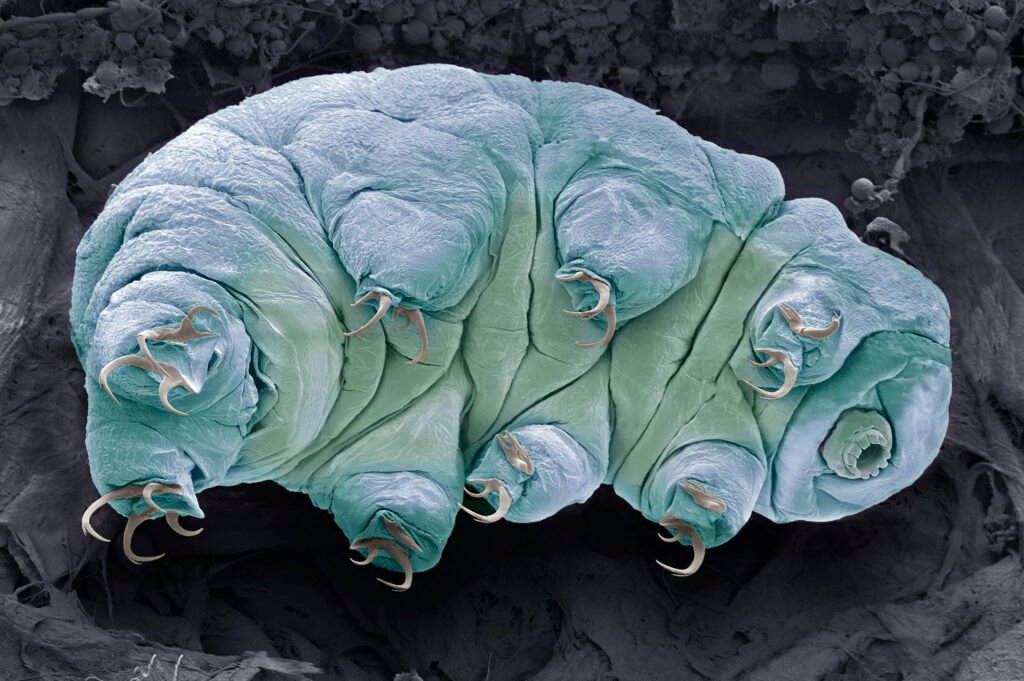Tardigrades aka water bears are microscopic animals having eight legs that have been to outer space and possibly are surviving the apocalypse. Water bears of microscopic size can easily survive in freezing, radiation, and many other conditions. Scientists are using them as a bullet to study their capabilities and limits. Scientists have identified a new breaking point for one of the most unbreakable life-forms that are known to humanity.
Tiny Tardigrades specifically known as water bears are one of the hardest animals that are known to us. These microscopic organisms can exist in very intense conditions like high temperature and the vacuum of space. Thus it concluded an idea called panspermia, which says some life- forms could easily move between worlds probably by taking a ride on a comet or a meteorite.
Especially for super tough creatures like tardigrades to make such a trip, they need to survive not just travel through space but also have to handle the space impacts. Accidently, a group of water bears is already known to impact the moon. In 2019, the lunar lander Beresheet of Israel crashed carrying thousands of dehydrated tardigrades with other things.
This incident results from a Ph.D. student at the Queen Mary University of London named Alejandra Traspas, thinking about whether tiny astronauts (tardigrades) might have survived or not. He worked with her supervisor named Mark Burchell, who was a planetary scientist at the University of Kent. They worked to design an experiment to simulate the experience of impacting celestial bodies whether the moon or other planets.
Traspas, with her supervisor, got some water bears that were in frozen conditions put in what is essentially similar to a bullet loaded into a two-stage light gas gun (a device that NASA uses to simulate impacts in space).

The water bear bullets were fired at targets that were made up of sand at different velocities to observe how the extremophiles fared. The results show that they could easily survive the effects that were to be created by speeds up to almost a kilometer per second (2,000 miles per hour approximately ) and shock pressure having intensity up to 1.14 gigapascals.
An article was published this week in Science Magazine where Traspas said that “any faster though” and “they just mush”. She further says that while Beresheet might be destroyed by crashing at lower speeds, but the (shock) pressure that is created when metal from a spacecraft hitting the moon’s regolith, probably be much higher. “We can confirm they didn’t survive.”
All of the observations and results are published in the journal Astrobiology. They are not hopeful about the prospects of panspermia and interplanetary travel through uncontrolled crash landing.
The study reads “Arrival of tardigrades on earth utilizing meteorite impact is not a possible and viable way of successful transfer even for such hardy organisms. However, there are other places in the atmosphere where biological materials during transfer would experience low shock pressures.”
Scientists observed that transfer between a planet and its moons such as Earth and its Moon, Mars, and Phobos is still possible because some parts of rocks and debris in space could impact at lower speeds and pressures.
Research also suggests how the future missions for looking at life outside the solar system might try and thus by taking the samples of watery plumes that emanate from Enceladus and Europa.
They suggest that future research perform ongoing observations of the tardigrades, to know the way of how being fired out of a gun affects their long-term survival.

1 Comment
Pingback: NASA will Blast nearly 128 Glowing Baby Squids and 5000 Tardigrades into space - Craffic